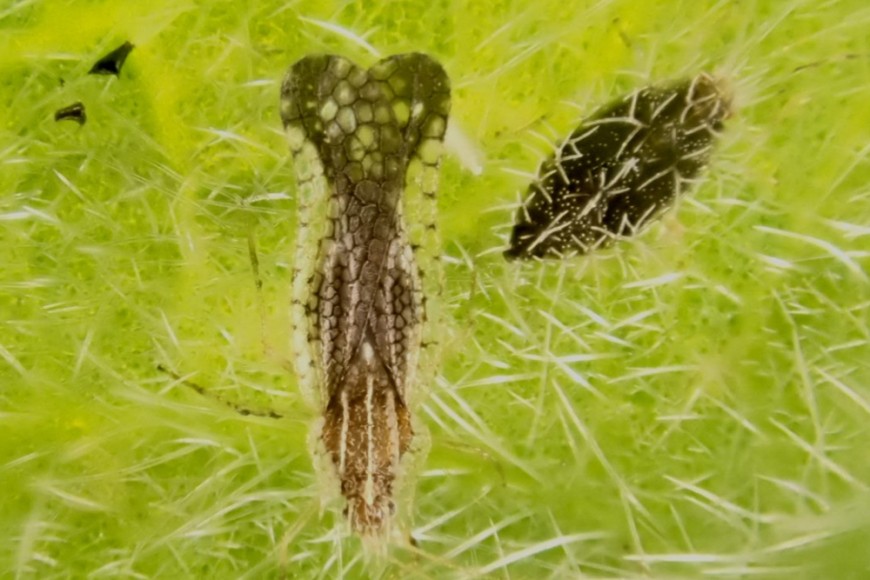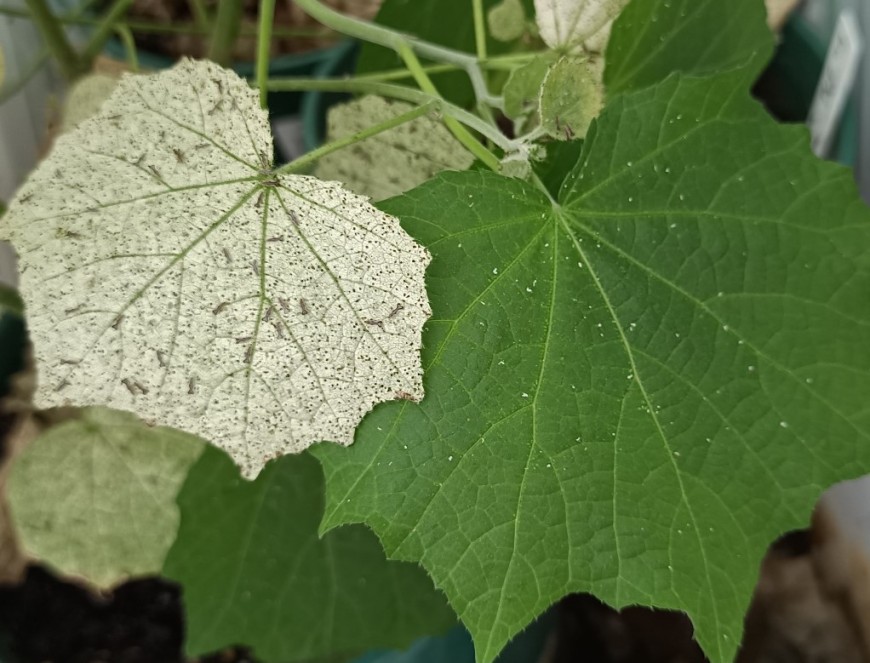Hibiscus bur lace bug
How would I recognise the lace bur and what is its lifecycle?
The adults are 2-3 mm long with lace-like wings that have darker brown markings, and they are shaped a bit like a fish. The nymphs are dark-coloured and covered in pale spines. They develop through 5 instars or growth stages. Nymphs and adults are typically found on the leaf surface. Nymphs feed gregariously around the location where they hatched and will disperse once they reach adulthood. The adults are slow-moving but can fly when provoked.
Females produce on average about 180 eggs each. The tiny eggs are implanted in the leaves on the lower surface and are not visible to the naked eye. It takes about 3 weeks for an egg to hatch and develop into a fully-grown adult. Once fully mature, males live for another 20 days and females live for around 40 days.

Hibiscus bur lace bug
How does it damage hibiscus bur?
The adults and nymphs feed on the leaves by inserting their needle-like mouthparts into the leaf tissue and sucking out the fluids. This creates small yellow/white spots on the upper surface of the leaf. When feeding damage is heavy the leaves turn yellow and die. In Malaysia the greatest damage is seen from March-July.

Top leaf feeding damage from adult and nymph lace bugs
Will it attack other plants?
During testing only one other plant species supported full development of the lace bug: Malvaviscus arboreus (an introduced ornamental plant in Vanuatu). However, it is a suboptimal host so lace bug populations cannot be sustained on it.
Minor adult feeding occurred on a few other plant species during no-choice testing: Hibiscus tiliaceus (a native plant), Sida rhombifolia (an introduced weed) and Abelmoschus esculentus (okra). Minor spill-over attack may occur on these species if high numbers of lace bugs are dispersing from nearby heavily damaged hibiscus bur plants in search of food. However, these species also occur in the native range of the lace bug and there are no records of the lace bug ever attacking them, so the test results may overestimate the risk.
Moreover, any non-target impact, if it occurs, will decline over time as hibiscus bur is brought under control and lace bug populations decline accordingly.

Manaaki Whenua technicain Stephanie Morton collects lace bug burs ahead of their transfer to Vanuatu
How can I get the most out of it?
We do not yet know how fast the lace bugs will disperse. But the adults are capable of flight and are likely to be good dispersers, so redistribution may not be required in many small islands. If redistribution proves necessary, the lace bugs could potentially be shifted about by collecting adults and releasing them at new locations.
